The Wolf Of Wall Street Review – A Financial Roller-Coaster

Film: The Wolf Of Wall Street
Director: Martin Scorsese
Screen time: 180 Minutes
Release Date: 17th Dec, 2013
Maturity Rating: 18+
Martin Scorsese, the iconic director of our time (and a time way before), has consistently demonstrated his prowess in the art of filmmaking, leaving an indelible mark on the industry. With a career spanning over five decades, Scorsese has shaped the cinematic landscape in ways that few can rival.
Moreover, only a few directors have explored rogues, the bond between volatile men, and living on the edge better and with more complexity than Martin Scorsese, and his new film The Wolf of Wall Street is his latest dive into these familiar themes.
The Wolf Of Wall Street Review
“The Wolf of Wall Street” is an unusual combination of the high-strung life of Wall Street and the crooked face of corruption. Based on the real-life events of Jordan Belfort (a Wall Street stockbroker) and how he rose to fame, this movie is a true cinematic masterpiece.
To begin with, Jordan Belfort is a man known for his high-pressure sales tactics and manipulation skills. The film depicts Belfort’s ability to persuade investors through his magnetic charisma, showing how he can convince them to act against their self-interest.
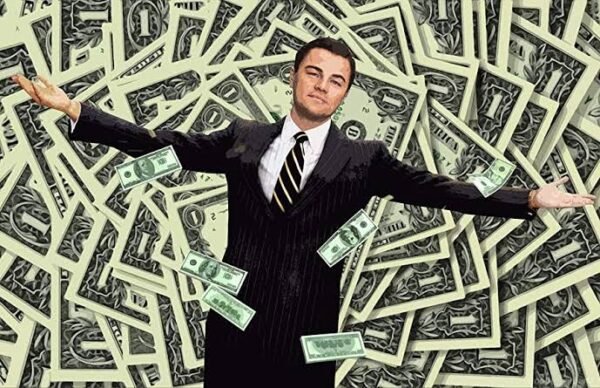
In addition, Belfort is played by none other than Leonardo Di Caprio himself. Also Starring Margot Robbie, Jonah Hill, Mathew McConaughey, and Kyle Chandler, the movie highlights the flaws of the American Justice System.
Theme/Setting
The main themes of this movie are greed, addiction, and corruption that result from overindulgence in materialism. It shows how Jordan Belfort and his associates engage in unethical financial practices that harm other people to satisfy their desires for money, power, and status.
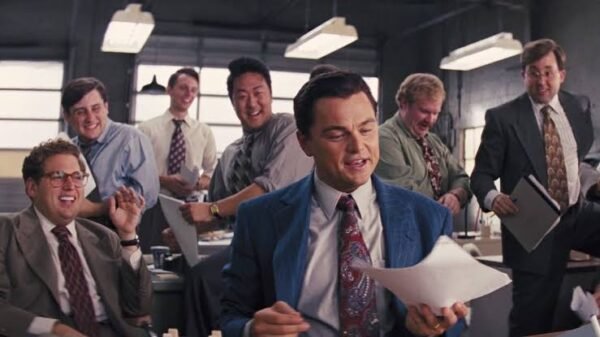
Furthermore, it depicts the opulent lifestyle and excessive behaviour of Belfort who becomes involved in corrupt and fraudulent activities, showcasing the lavish parties, high-stakes trading, and moral decadence of the era.
Character Development
The film attempts to depict the metamorphosis of a wolf into a sheep. The fierce, royal quality of a rich stockbroker ultimately transforms into a meek educationalist, trying to live by sharing his knowledge. The character of Belfort goes through several stages of a life filled with the highs and lows of substances, dollars, and the ladies.
However, Belfort is furiously appetitive, idiosyncratically gifted, and perceptively opportunistic. He doesn’t so much turn to the dark side as stumbles into it and just keeps going. His story is one of drugs and rock and roll, but with financial machinations replacing the music.

Nevertheless, Belfort loves what he sees and does. It’s thrilling for him to use and abuse this power, and it’s thrilling for us to watch. Understanding that his actions are wrong only adds to the thrill. His misadventures are driven by his desire for a wilder experience, a greater pleasure, a higher high, a more shattering ecstasy.
Cinematography
The movie’s cinematic inventions are no mere flourishes. They are essential to Scorsese’s vision of Belfort’s story, and to the disturbing moral ideas that he extracts from it.
Nonetheless, Scorsese also introduces a great device to impose the protagonist’s point of view. Belfort narrates the action even while he’s living it, addressing the camera with monologues that show him to be both inside and outside the events, converging on-screen his present and former selves.
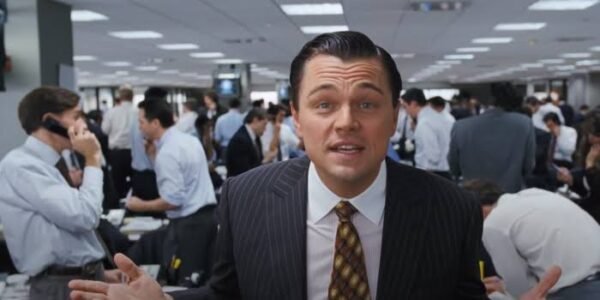
Gradually, through its dark humour and larger-than-life characters, the film encourages viewers to reflect on their values and the ethical choices they make in a world that often prioritizes materialism and self-indulgence.
Consequently, this makes it a thought-provoking and memorable cinematic experience.
Message
The ‘Wolf of Wall Street’ also becomes an apt representation of society. Corruption not only exists among stockbrokers but also exists in many other fields like politics, business, finance, media, etc. We live in a world where committing fraud has become so common because it is ignored most of the time.
Most importantly, it portrays the consequences of a culture that values money and hedonism above all else, ultimately showing how this insatiable desire for riches can lead to ethical deterioration and personal ruin.
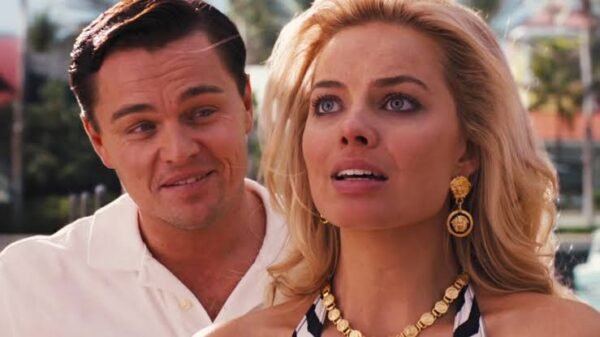
Finally, this message adds a satirical edge to the film, which Scorsese is effortlessly capable of.
Summary
“The Wolf of Wall Street” is a financial rollercoaster because it follows the true story of Jordan Belfort’s dramatic rise and fall in the world of high finance. The movie’s portrayal of wild stock market manipulation, excess, and the consequences of financial misconduct makes it a thrilling and turbulent ride through the world of finance.
In my opinion, the film makes us think about certain things like whether or not we should envy, berate, criticize, or celebrate the character of the ‘Wolf Of Wall Street’. Perhaps Scorsese’s whole idea was to induce critical thoughts among the audience with the thrills and charms, tragedy, and comedy of his films, as is the norm.
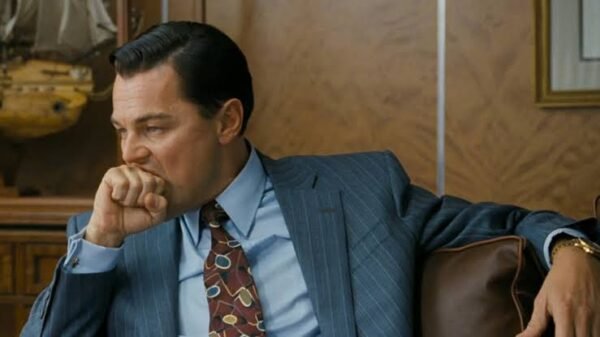
Rating: 8.5/10
Pros
- Exceptional Performance
- Engaging Storytelling
- Energetic Direction
Cons
- Excessive Adult Content
- Lengthy Runtime
- Ethical Concerns






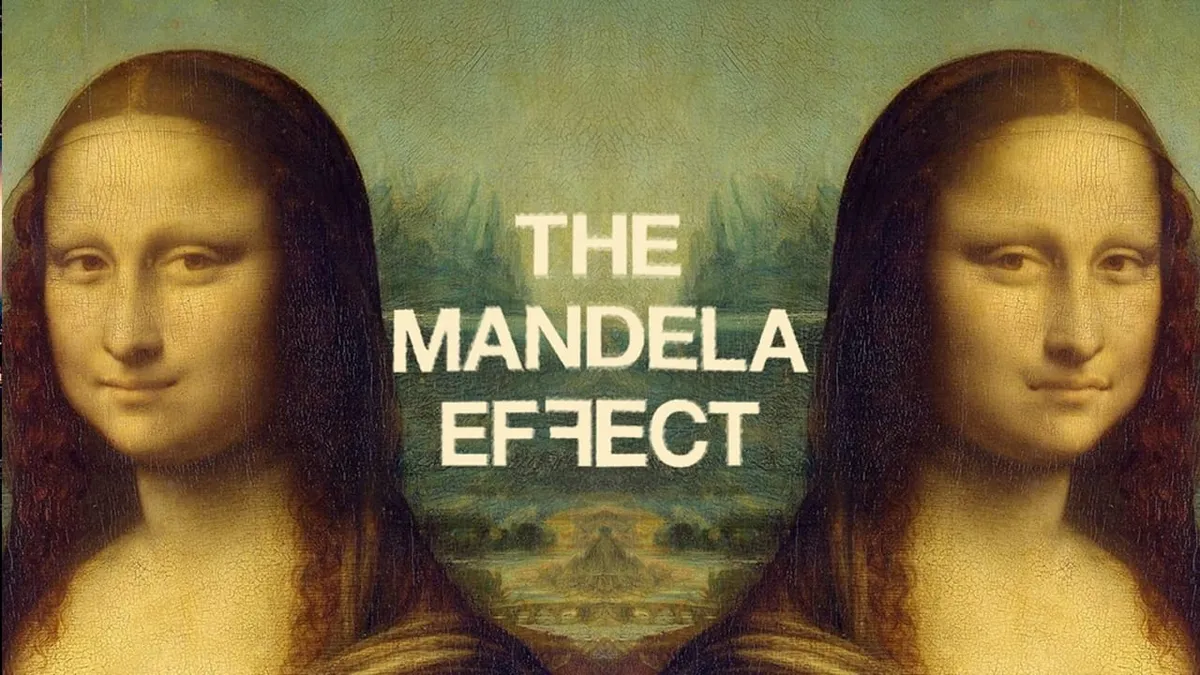

Thank you for your sharing. I am worried that I lack creative ideas. It is your article that makes me full of hope. Thank you. But, I have a question, can you help me?